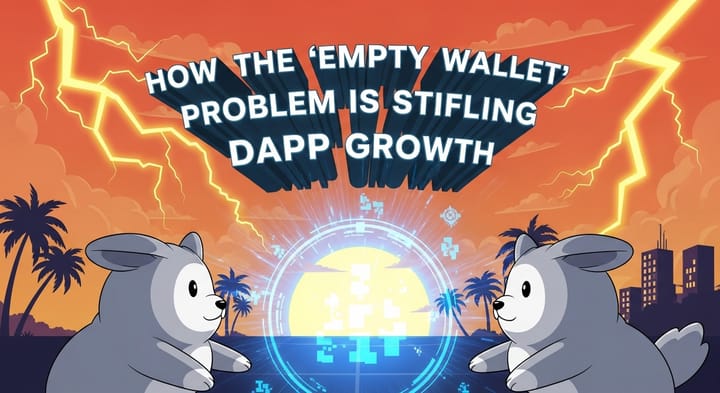Cross-Chain Liquidity Management: Unifying DeFi with Mitosis

Decentralized finance (DeFi) has reshaped how we think about money, offering open, permissionless systems for trading, lending, and investing. Yet, a persistent challenge holds it back: liquidity fragmentation. Assets locked on one blockchain (whether Ethereum, Solana, or Cosmos) often can’t flow freely to others, creating inefficiencies, missed opportunities, and volatile yields.
Enter Mitosis, a Layer 1 blockchain designed to tackle this problem head-on with a bold vision for cross-chain liquidity management. Mitosis is poised to redefine DeFi’s future by enabling seamless asset movement and programmable liquidity. This article explores how Mitosis addresses liquidity imbalances, manages idle assets, and boosts capital efficiency, paving the way for a more connected financial ecosystem.
Addressing Liquidity Imbalances Across Chains
Liquidity imbalances are a core issue in DeFi. Each blockchain operates as a walled garden, with assets like ETH on Ethereum or SOL on Solana unable to interact natively with other chains. This fragmentation leads to uneven liquidity pools; some chains have excess capital, while others struggle to attract enough to support robust trading or lending. Mitosis solves this by creating a unified liquidity framework that allows assets to move seamlessly across chains without relying on risky bridges or wrapped tokens.
Mitosis uses its Vault System Architecture, where users deposit assets into smart contracts on supported chains (e.g., Ethereum). These assets are locked, and a 1:1 representation, called Vanilla Assets (vAssets), is minted on the Mitosis Chain. For example, depositing 10 ETH on Ethereum results in 10 vETH on Mitosis, which can then be deployed across chains like Monad or Cosmos. This process eliminates the need for manual bridging, reducing fees and security risks. By aggregating liquidity from multiple chains into unified pools, Mitosis ensures that capital flows to where it’s needed most, balancing supply and demand dynamically.
The protocol’s cross-chain messaging, built on Hyperlane’s permissionless interoperability, enables real-time communication between chains. This means a liquidity pool on Solana can instantly respond to demand spikes on Avalanche, preventing imbalances that cause high slippage or poor trade execution. Mitosis’s approach creates a fluid market where liquidity isn’t trapped, fostering stability and efficiency across DeFi ecosystems.
Managing Idle Assets Through Dynamic Reallocation
In traditional DeFi, assets locked in liquidity pools often sit idle, earning suboptimal yields or none at all when market conditions shift. Mitosis tackles this by introducing dynamic reallocation, ensuring that idle capital is continuously optimized for maximum returns. Its Ecosystem-Owned Liquidity (EOL) model empowers users to deposit assets into Mitosis Vaults, receiving miAssets (tokenized representations that can be used in various DeFi strategies) while the original assets work across chains.
For instance, a user deposits USDC into a Mitosis Vault on Ethereum. The protocol’s algorithms assess yield opportunities across connected chains, reallocating the liquidity to high-demand areas, like a Solana-based automated market maker (AMM) offering better returns. The user’s miUSDC remains tradable and usable on Mitosis, allowing them to stake, lend, or govern without losing exposure to their original deposit. This flexibility transforms idle assets into active capital, reducing opportunity costs.
Mitosis’s dynamic reallocation is powered by AI-driven strategies and community governance. Liquidity providers (LPs) vote on allocation strategies, prioritizing protocols or chains with the best risk-reward profiles. If a lending market on Cosmos offers a higher APY than an Ethereum DEX, Mitosis can redirect liquidity instantly, ensuring capital isn’t wasted. This system not only maximizes yields but also supports emerging chains by bootstrapping their liquidity, creating a win-win for users and ecosystems.
How Cross-Chain Strategies Improve Capital Efficiency
Capital efficiency (the ability to generate maximum returns from every dollar of capital) is a cornerstone of DeFi’s promise. Yet, fragmentation undermines this by locking assets in single-chain silos. Mitosis’s cross-chain strategies unlock new levels of efficiency by making liquidity programmable and composable across networks. Its Matrix Vaults and tokenized assets (miAssets and maAssets) allow users to leverage their capital in multiple ways simultaneously, amplifying returns without increasing risk.
Consider a hedge fund depositing $10M in ETH into a Mitosis Vault. The protocol mints vETH, which can be supplied to EOL pools for yield farming on Ethereum, used as collateral for borrowing stablecoins on Mitosis’s lending markets, or allocated to a Monad-based DEX for trading fees. The fund’s miETH tokens also grant governance rights, letting them influence liquidity allocation across chains. This multi-use approach ensures that capital isn’t just sitting in one pool but is actively working across DeFi applications.
Mitosis further enhances efficiency by eliminating intermediaries like centralized bridges, which charge high fees and introduce delays. Its trust-minimized design, using decentralized smart contracts and Hyperlane’s interoperability, ensures low-cost, instant transfers. For example, a user can provide ETH-only liquidity on Ethereum and earn yields from a Solana protocol without ever leaving their native chain. By unifying liquidity and enabling single-asset pools across chains, Mitosis reduces fragmentation, lowers slippage, and maximizes the utility of every asset.
Conclusion
Mitosis is redefining cross-chain liquidity management by addressing DeFi’s biggest pain points with innovative solutions. First, it tackles liquidity imbalances by creating a seamless network where assets flow freely between chains, balancing supply and demand to reduce inefficiencies. This ensures that no chain is starved of capital, fostering stability across ecosystems.
Second, its dynamic reallocation turns idle assets into active capital, using AI and governance to optimize yields and support emerging protocols. This keeps liquidity working harder, benefiting both users and networks.
Third, Mitosis’s cross-chain strategies boost capital efficiency by making liquidity programmable and composable, allowing users to maximize returns through multi-use assets and trust-minimized transfers. Together, these advancements make DeFi more accessible, scalable, and resilient.
What if liquidity could move as freely as information does on the internet? Mitosis is building that future, transforming DeFi from fragmented pools into a cohesive, global financial system. By unifying liquidity, it’s not just solving today’s challenges, it’s setting the stage for a new era of decentralized innovation.



Comments ()